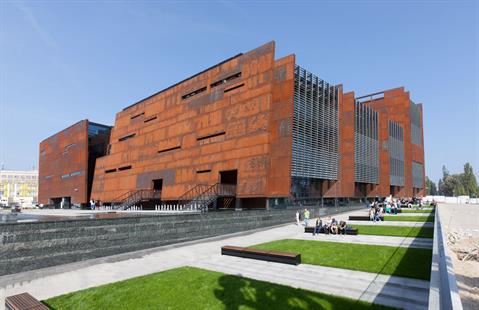
Facade cladding materials
Our material portfolio for cladding products
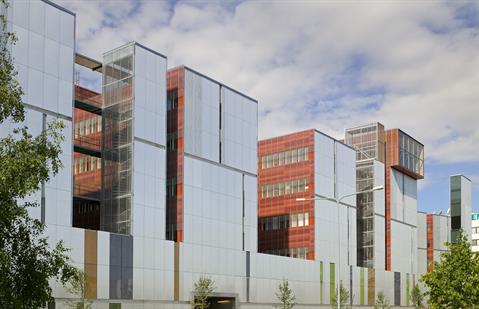
Colour-coated steel
Colour-coated metal facade products are a durable way to use colours in all sizes of surfaces and colour compositions.
Read more about colour-coated materials.tmb-479v.jpg?sfvrsn=fd55b010_1)
Aluminium
Aluminium is a lightweight and highly corrosion resistant material available with colour-coating finish.
Read more about Aluminium material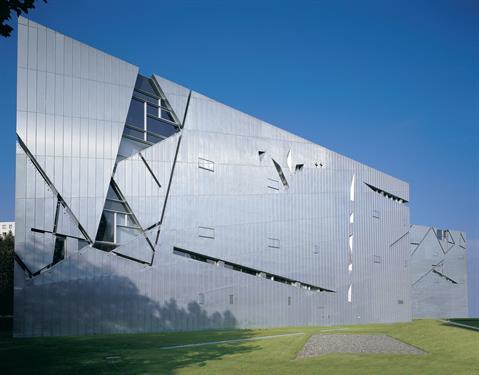
Rheinzink
Patinated Rheinzink has an aesthetically soft, matt surface that gives a very natural impression. The patina changes very little over time.
Read more about Rheinzink materials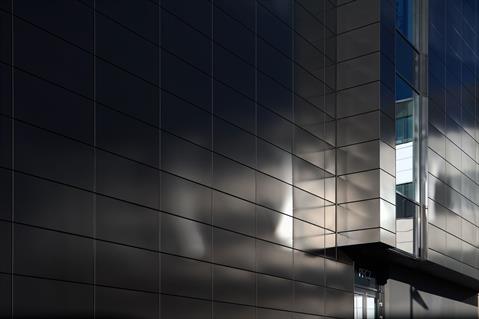
Stainless steel
Stainless steel maintains its shine and appearance very well and, as a solid material, it is very easy to maintain.
Read more about Stainless steel material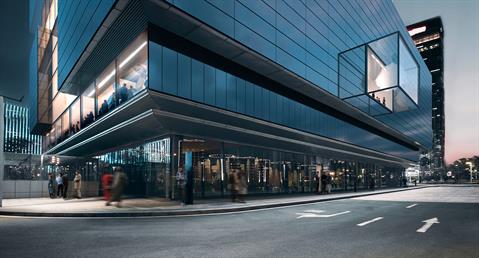
Aluminium composite
Colour-coated aluminum composite materials offer excellent surface flatness and enable big product sizes.
Read more about aluminium composite materials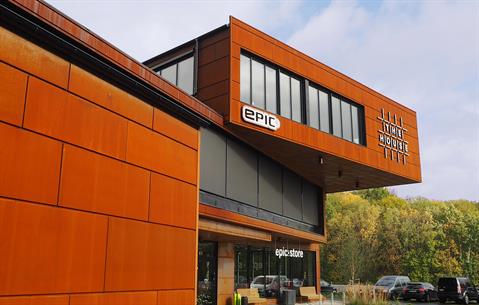
Cor-Ten®
Cor-Ten® is a solid steel that has a natural, rugged patina that ages continuously in a unique way.
Read more about Cor-Ten® material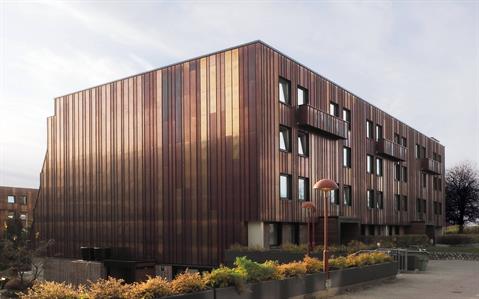
Copper, brass, bronze
Patina forming on the wall and various pre-patina options give these solid metals a live, genuine surface for very long time spans.
Read more about copper, brass and bronze materials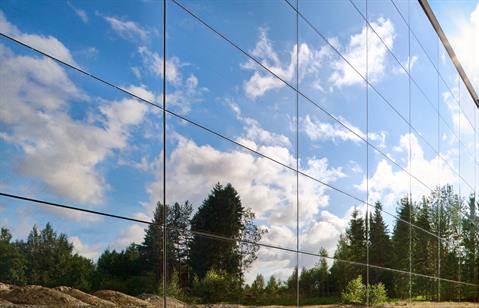
Glass
Glass creates a high gloss and durable flat surface for the facade.
Read more about Glass materialRight material for the climate
UV resistance
Coating’s resistance to natural outdoor UV (ultra violet) radiation is described through UV resistance categories Ruv1 – Ruv4 in accordance with EN10169. UV resistance describes how well the coating is able to keep its original colour and
gloss levels in outdoor conditions. Coatings in Ruv1 category have very weak UV resistance and should only be used in indoor conditions. Coatings in Ruv4 category have strong UV resistance and are therefore recommended to outdoor use.
Corrosivity
Atmospheric gasses and electrolytes react with all façade materials. The rate and effects of those reactions depend on two factors, the atmospheric conditions (e.g. wetness, salinity, sulfur dioxide) and the material in questions. Both vary extensively. For design purposes the atmospheric conditions have been divided into categories (C1-CX) based on their aggressiveness in accordance with EN 12944. Material and coating suppliers can then assess the suitability of their products in each category for normal service life, but the designers will still have to take into account any building specific factors when making the final decisions on façade materials. Note: C class should not be mixed with RC class (EN 10169), which is a classification for coating, not for atmospheric condition.
| Corrosivity category | Exterior | Interior |
| C1 | - | Heated buildings with clean atmospheres, e.g. offices, shops, schools, hotels. |
| C2 | Exterior refers to atmospheres with low level of pollution: mostly rural areas | Unheated buildings where condensation may occur, e.g. depots, sports halls. |
| C3 | Exterior refers to urban and industrial atmospheres, moderate sulfur dioxide pollution; coastal areas with low salinity | Production rooms with high humidity and some air pollution, e.g. food-processing plants, laundries, breweries, dairies. |
| C4 | Exterior refers to industrial areas and coastal areas with moderate salinity | Chemical plants, swimming pools, coastal ship- and boatyards. |
| C5 | Exterior refers to industrial areas with high humidity and aggressive atmosphere | Buildings or areas with almost permanent condensation and with high pollution. |
| CX | Exterior refers to industrial areas with extreme humidity and aggressive atmosphere | Offshore areas with high salinity and industrial areas with extreme humidity and aggressive atmosphere and subtropical or tropical atmospheres |
Contact us
form
Why we are collecting and processing personal data? Please check our Privacy Statement.
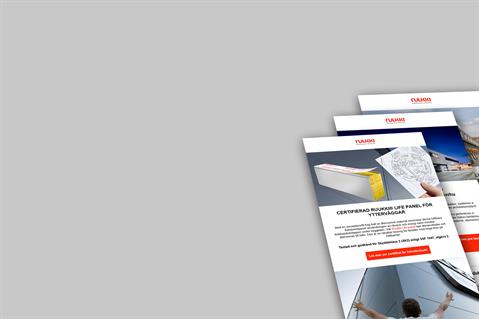
Subscribe to our newsletter
Sign up for Ruukki Buildng Envelopes newsletter and stay informed with our latest news, offers and events.
Sign up hereFacade cladding offering

Ruukki® Primo panels
Ruukki® Primo panels are aimed for premium façade segment, e.g. hotels and offices in urban environment. Panels are folded on all sides and are available with both concealed and visible fixing solutions. Primo panels are available in big product sizes and have excellent surface flatness.
Read more about Ruukki® Primo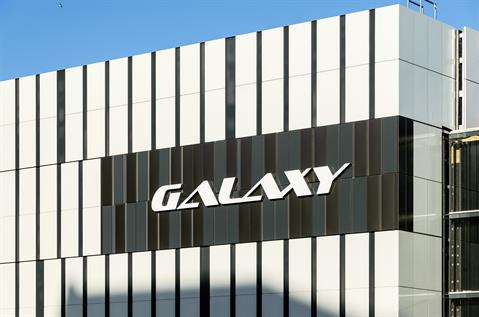
Ruukki Liberta® panels
Ruukki Liberta® panels are folded on all sides to offer maximum rigidity for solid metal cassettes with both concealed and visible fixing solutions. The panels come in an extensive selection of materials, finishes and colours. New! Now part of Ruukki® LowCarbon offering.
Read more about Liberta® panels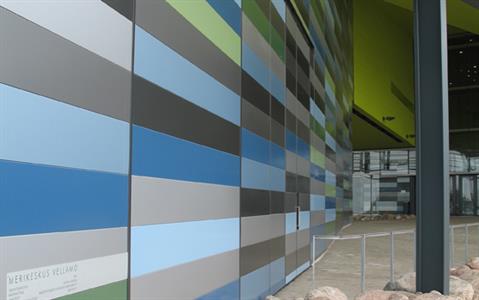
Lamellas
Lamellas are narrower profiles that are folded along two long edges and divide facade surfaces one-directionally. Variety of shapes in the long edge detail together with visible and concealed fixings allow you to accentuate the surface division to just the right amount.
Read more about Lamellas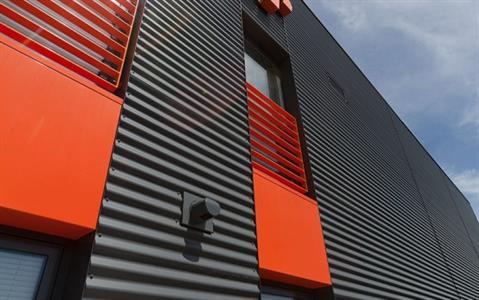
Design profiles
Design profiles create a continuous, structured facade surface. With options for both profile and material, the scale and attenuation of the surface structure can be matched to meet the architectural needs of the facade in question. NEW! Now part of Ruukki® LowCarbon offering.
Read more about Design profiles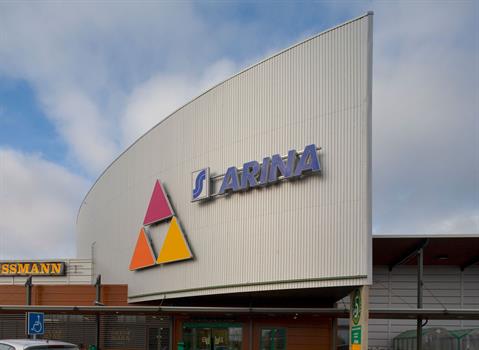
Other profiles
Available in a range of shapes, coatings and colours, low-profiled sheets offer many design opportunities for a variety of commercial and industrial buildings’ facade and internal lining. Easy and fast to assemble, low-profiled sheets are a perfect choice when speed of construction and functionality is key.
Read more about other profiles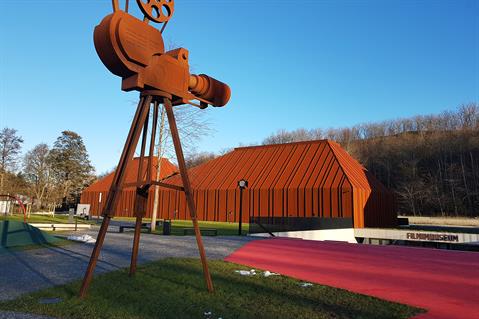
Bespoke systems
On large projects, which are outside the possibilities of our standard products, the cladding solution can be designed in co-operation to meet the needs of that specific project. Our technical experts will work together with the project architect to ensure architectonic, technical and economic feasibility.
Read more about bespoke systems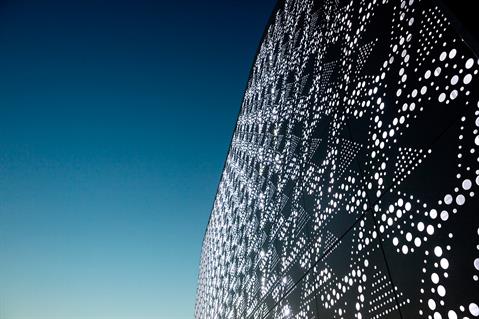
Perforations & backlighting systems
Many of the facade claddings Ruukki has to offer can be perforated in several ways. They can also be perforated freely to form a picture or a pattern. Ruukki can pixelate any picture to a hole map on actual products. The perforated facades can also be backlit by modern LED ligh systems.
Read more about perforations & backlighting systems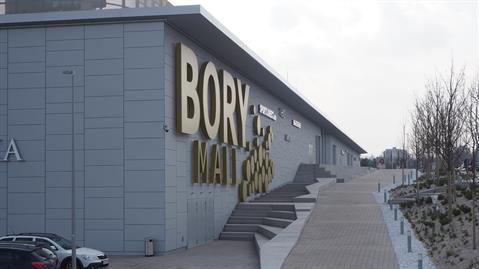
Complete wall systems
Ruukki Forma® is a complete exterior wall system, combining our facade cladding products with our highly energy efficient sandwich panels. The sandwich panels are also available in the highly sustainable Ruukki Life panel version, with approximately 80% recycled material content.
Read more about complete wall systems
Cladding materials
Material and colour are one possible starting point for facade design, but the result depends equally on the products and surfaces used. Our products and services offer quality, predictability and reliability to endless combinations of colours, material, surface shape and even light.
Read more about cladding materials




.tmb-250x190.jpg?sfvrsn=607438b5_1)





